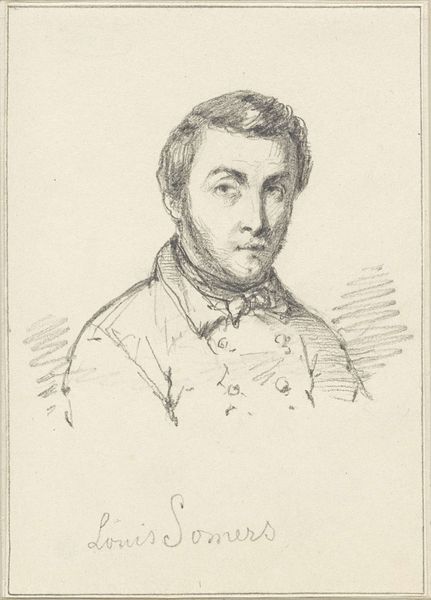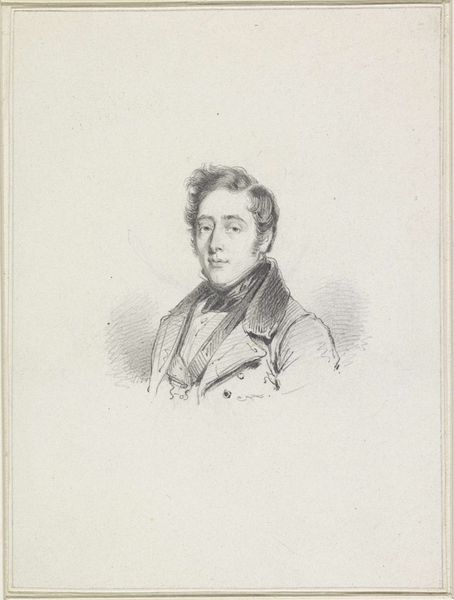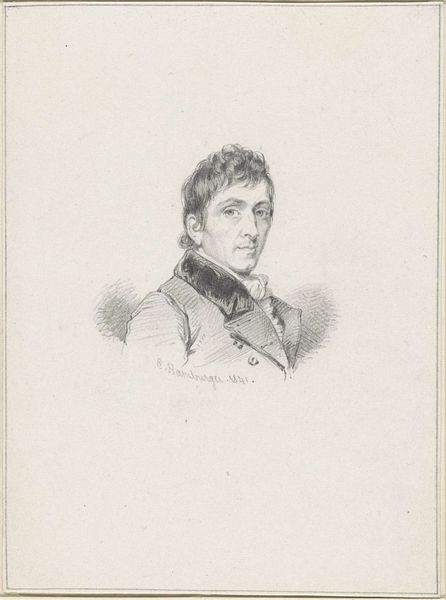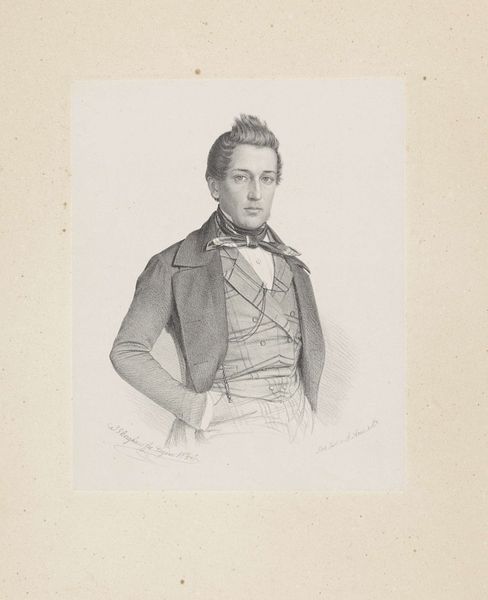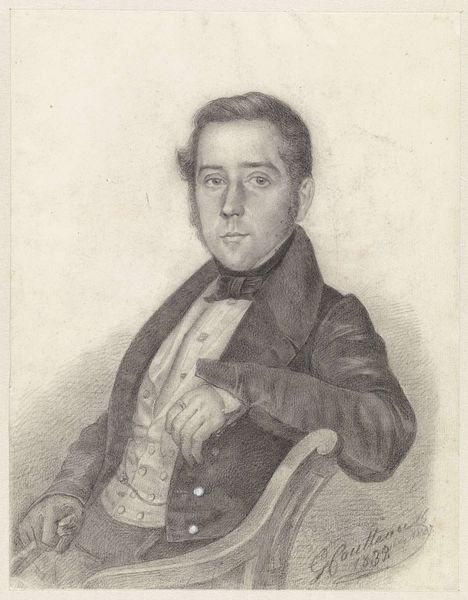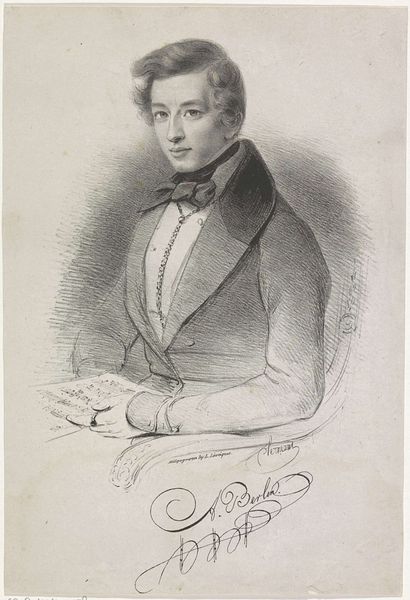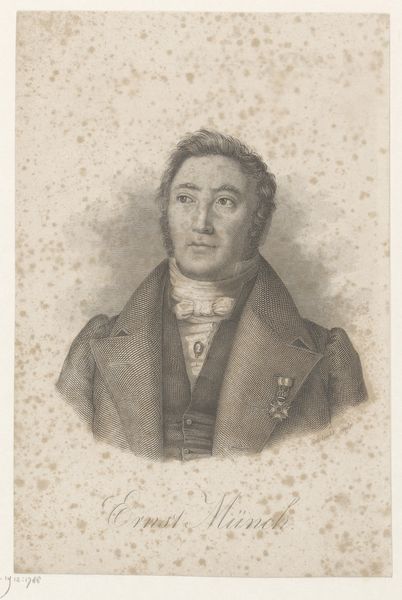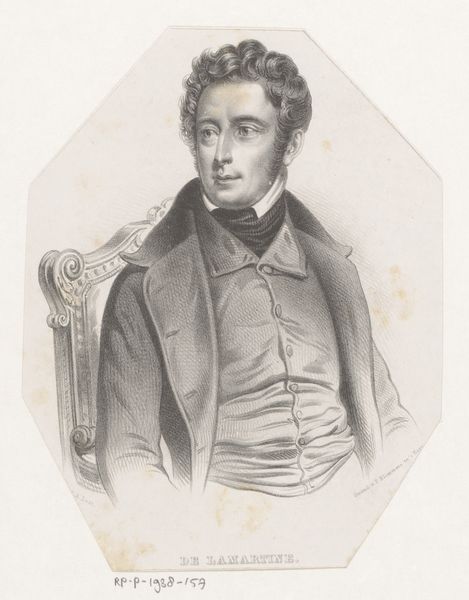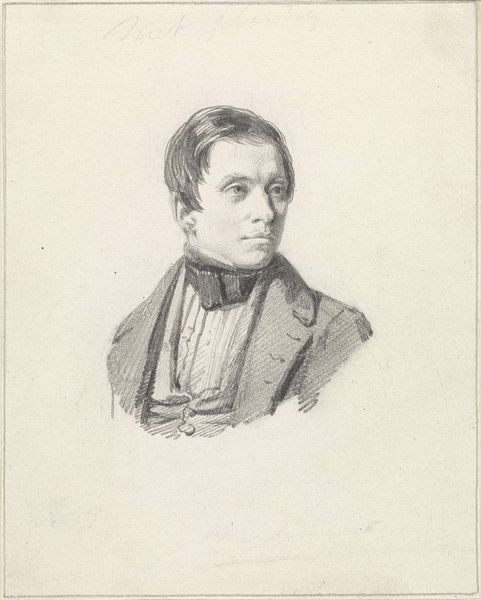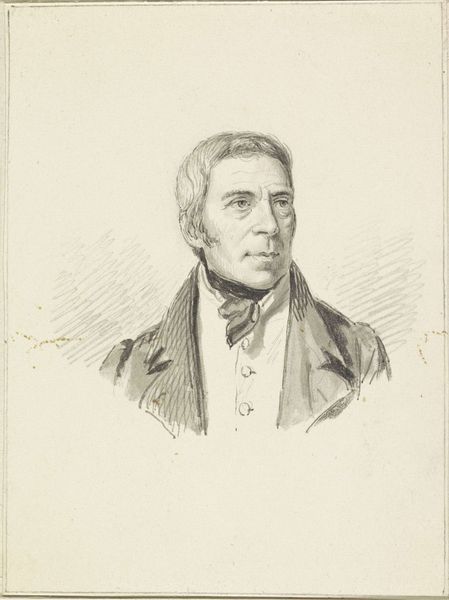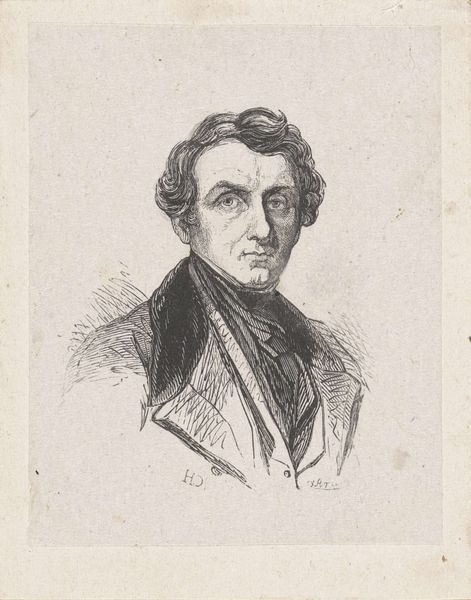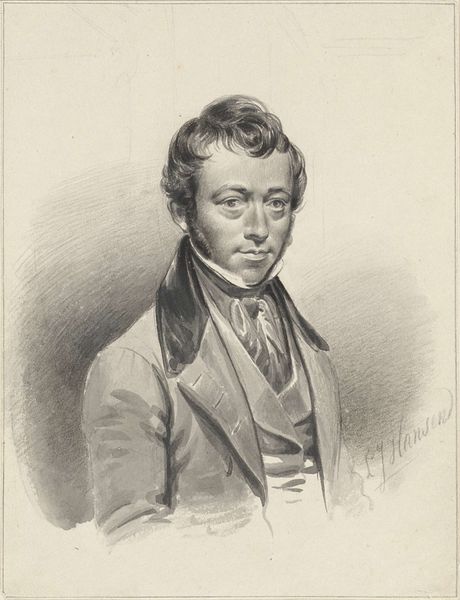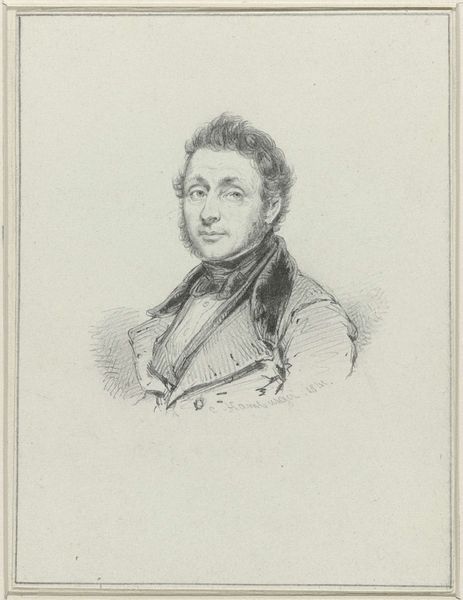
Dimensions: height 233 mm, width 163 mm
Copyright: Rijks Museum: Open Domain
Curator: This pencil drawing, titled "Zelfportret van Jacobus Pelgrom," was completed in 1859 and resides here at the Rijksmuseum. What strikes you most about this self-portrait? Editor: It’s the intensity in his gaze, really. Even with the delicate pencil work, there's a palpable seriousness. You can sense the artist grappling with identity, performance, and self-representation through this medium. Curator: Exactly. The institutional framework of art production during the Romantic era placed significant emphasis on the artist's subjective experience. Pelgrom uses the relatively accessible medium of pencil to create an intensely personal, yet undeniably public, declaration. Editor: But doesn't the choice of pencil drawing challenge notions of high art? The softness feels almost vulnerable, pushing back against the bravado often associated with self-portraits commissioned in oil by established artists of that time. What position does this medium grant the artist? What agency? Curator: I think that’s right. Think about class and accessibility. Pencil drawings, especially in the mid-19th century, are not exclusive to the dominant societal groups and ruling classes. This allows for an intervention that circumvents traditional gatekeepers and speaks to the democratization of image making in response to academic standards for success. Editor: A silent revolution, in graphite! This could be viewed as a self-validation ritual for someone without access to elite resources. I read the face too as not entirely certain, like he's investigating what his social position could be through portraiture. Curator: Indeed. The act of portraying oneself becomes an act of self-definition. Pelgrom's choice subverts those expectations and forces us to confront the complex power dynamics embedded in the very act of artistic creation, making it a commentary on its time, not just a likeness of a man. Editor: And maybe in considering what success meant to an artist during his time, we should pause on the success of Pelgrom’s attempt, centuries later, to still speak so directly to viewers like us.
Comments
No comments
Be the first to comment and join the conversation on the ultimate creative platform.
